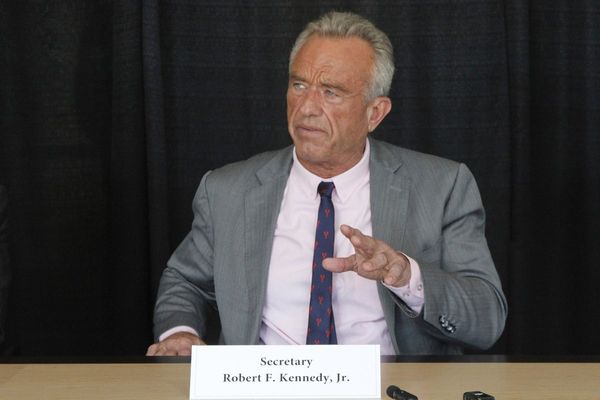
Historians often rely on new discoveries in order to make breakthroughs. Every now and again, a fresh document, a set of papers or a whole manuscript is found by chance. Maybe something unexpected and surprising will pop up from an archaeological dig or – in the case of inns and oasis towns along the Silk Roads – from the declassification of CIA satellite images taken during the cold war, which revealed sites that had long fallen out of use and been forgotten on the ground.
Researchers used to dream about such treasure troves. They do not have to any more. We are living not so much in a golden age of new evidence, but in one of hyper-abundance. Almost all of this comes from the physical and natural sciences. Politicians often talk crudely about “choices” between the humanities and Stem subjects, but in today’s world, cutting-edge history is all about understanding, assessing and integrating materials from sources that would have been completely alien to most historians writing just a generation ago. These materials are transforming ideas about the past – often in radical ways. And climate is central to that transformation.
That’s the case because so many of these new sources are linked to “climate archives” – data that can be collected from the analysis of tree rings, by measuring calcium carbonate deposits in caves or by assessing carbon dioxide bubbles and impurities in ice cores drilled in Greenland, the Antarctic and elsewhere. These not only reveal atmospheric composition, but also indicate levels of human activity: for example, lead particles recovered from polar regions tell us that more energy was used in ancient Rome than in any other era before the start of the Industrial Revolution.
The insights such materials provide are not only exciting but essential to how we think about the past. One of the key factors in the fall of Cleopatra, for example, appears to have been the massive eruption of the Okmok volcano in Alaska in 43BC, an event that can now be measured scientifically but which also corresponds with contemporary accounts of feeble sunlight and reports of crop shortfalls. This produced a local crisis that included famine, migration, inflation and land abandonment – all of which put the Egyptian ruler in a precarious position that she tried to solve by deciding to throw her lot in with Mark Antony, with fateful consequences.
Eruptions help explain other major changes, such as the emergence of a “super-elite” in Scandinavia. The collapse of exchange networks and depopulation that followed volcanic activity made land cheaper, and consequently formed the basis not only for large-scale land ownership, but for the age of the Vikings. Or there is the famous case of Mount Tambora, whose eruption in 1815 brought about a “year without a summer”. This not only created the atmospheric conditions that inspired Mary Shelley to write Frankenstein while holidaying in an unusually cold and stormy Switzerland, but led to agrarian collapse in New England and prompted the first major economic depression in the history of the United States.
Global weather systems such as the El Niño-Southern Oscillation, a cycle of warm and cold periods in the Pacific Ocean, have had huge and unpredictable consequences for human civilisation. The way this pattern interacts with other climatic systems, with solar activity, and with the eccentricity of our planet’s orbit helps provide context for events as diverse as the rise of cities in Mesopotamia and the European colonisation of Florida – which was almost abandoned because the peninsula was so cold. Shifting climate patterns in the distant past are responsible for where some of the most fertile land and most of the world’s major hydrocarbon deposits are located, which in turn is crucial for understanding the transatlantic slave trade and the modern-day politics of energy.
Ironically, past historians often paid considerable attention to changes to the natural environment. They considered the ways it affected the formation of states and empires, and even the influence it had on people’s customs and characters. Over time, such approaches came to be seen as being too deterministic and dependent on opinion, rather than on hard facts. Climate was downgraded or ignored as a driver of human affairs, but history was incomplete as a result. Things are now coming full circle, though with considerably greater accuracy this time round. That’s all thanks to the proliferation of new tools and methods, as well as the enthusiasm of many modern scholars, who rightly want to place historical changes in the broadest possible context.
From a historian’s point of view, the wealth of new evidence is like being given the keys to the sweetshop, along with an invitation to help oneself to what is on the shelves. But there is a wider value here too, given the nature and scale of the climate crisis: evidence contained within tree rings and ice cores serves as a reminder of the existential questions we must now so urgently address, and which those who lived beyond their means in the past were forced to reckon with. What happens when emerging infectious diseases and a warming climate interact? What are the environmental catalysts for socioeconomic and political collapse? What is the best way to adapt to a crisis? In the past, historians did not always have the tools to answer those questions empirically. Now, increasingly, they do.
The Earth Transformed by Professor Peter Frankopan (Bloomsbury Publishing PLC, £30). To support The Guardian and Observer, order your copy at guardianbookshop.com. Delivery charges may apply.
Further Reading
The Hungry Empire: How Britain’s Quest for Food Shaped the Modern World by Lizzie Collingham (Vintage, 2017)
Mosquito Empires: Ecology and War in the Greater Caribbean, 1640-1914 by John McNeill. (Cambridge, 2010)
Global Crisis: War, Climate Change and Catastrophe in the Seventeenth Century by Geoffrey Parker (Yale, 2013)







